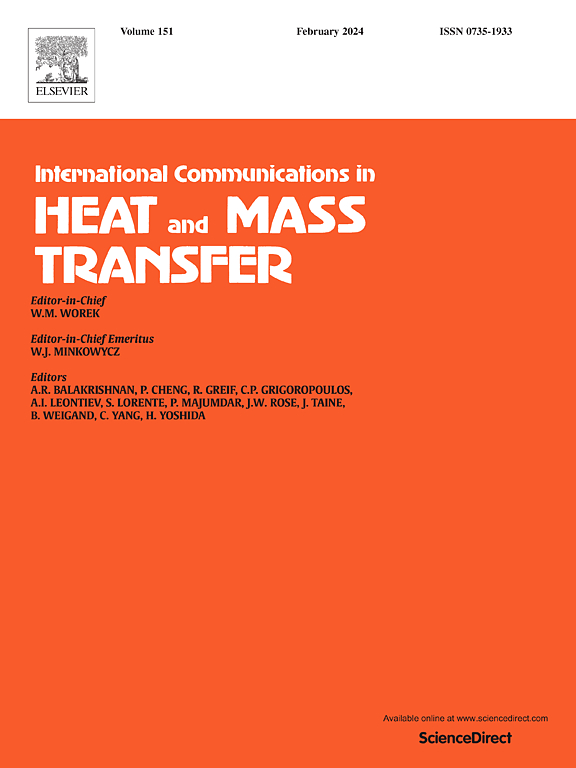利用热性能和老化效应建立管道系统中防热保温材料生命周期评估模型
IF 6.4
2区 工程技术
Q1 MECHANICS
International Communications in Heat and Mass Transfer
Pub Date : 2025-03-07
DOI:10.1016/j.icheatmasstransfer.2025.108819
引用次数: 0
摘要
大多数发电厂和区域供热系统采用岩棉或陶瓷玻璃纤维隔热材料来隔热管道。随着时间的推移,这些材料会失去一些品质。目前的研究测试了两种用于发电厂或区域供热(DH)系统中输送热蒸汽管道的隔热材料:陶瓷玻璃纤维(insulfrax)和柔性矿棉。在高温(150°C和250°C)下测量导热系数,模拟时间流逝的影响。结果表明,与矿棉(0.038-0.422 W/mK)相比,岩棉的导热系数在0.025-0.031 W/mK之间均较低。然而,矿棉的导热系数不断增加(分别为3%和9%),而在250℃下进行热退火后,矿棉的导热系数仅上升了24%左右。扫描电镜成像和差示扫描量热实验显示材料在150和250°C下热处理1天后结构可能发生的变化。用差示扫描量热法计算了晶体的比热变化,并推导了结晶过程。最后,采用比较生命周期评估方法,根据环境性能选择材料,以符合可持续发展目标的要求。本文章由计算机程序翻译,如有差异,请以英文原文为准。

Thermal performance and ageing effects to model the life cycle assessment of heat-protective thermal insulation materials in pipe systems
Most power plants and district heating systems employ rock wool or ceramic fiberglass insulations to insulate their pipes. Over time, these materials lose some qualities. The present study tested two thermal insulation materials for applications in pipelines carrying hot steam in power plants or district heating (DH) systems: ceramic fiberglass (insulfrax) and flexible mineral wool. Thermal conductivity was measured at high temperatures (150 and 250 °C), simulating the effect of the passage of time. It was found that insulfrax had lower thermal conductivity in all cases 0.025–0.031 W/mK, compared to the mineral wool (0.038–0.422 W/mK). However, thermal conductivity of the mineral wool was continuously increasing (3 % and 9 %), and the thermal conductivity of the insulfrax jumped only after thermal annealing at 250 °C, but by about 24 %. Scanning electron microscopic imaging and differential scanning calorimetry experiments were used to reveal any possible changes in the structures of the materials after thermal annealing them at 150 and 250 °C for 1 day. The change in the specific heat was also calculated with differential scanning calorimetry, and crystallization processes were deduced. Finally, a comparative life cycle assessment was applied to select materials based on environmental performance, aligning with the Sustainable Development Goals requirements.
求助全文
通过发布文献求助,成功后即可免费获取论文全文。
去求助
来源期刊
CiteScore
11.00
自引率
10.00%
发文量
648
审稿时长
32 days
期刊介绍:
International Communications in Heat and Mass Transfer serves as a world forum for the rapid dissemination of new ideas, new measurement techniques, preliminary findings of ongoing investigations, discussions, and criticisms in the field of heat and mass transfer. Two types of manuscript will be considered for publication: communications (short reports of new work or discussions of work which has already been published) and summaries (abstracts of reports, theses or manuscripts which are too long for publication in full). Together with its companion publication, International Journal of Heat and Mass Transfer, with which it shares the same Board of Editors, this journal is read by research workers and engineers throughout the world.

 求助内容:
求助内容: 应助结果提醒方式:
应助结果提醒方式:


